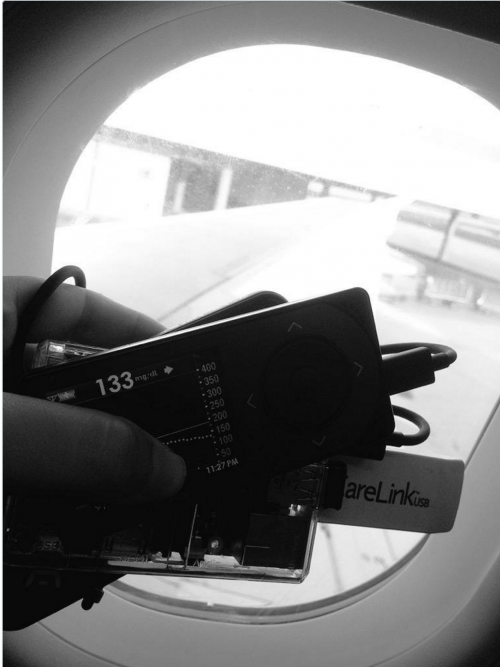Every now and then a project turns up that makes us blink hard and wonder what on earth we’ve started with this Raspberry Pi thing. This is one of them.
Dana Lewis has Type 1 Diabetes, which she’s had to deal with since she was 14. In Type 1 Diabetes, the pancreas doesn’t produce enough insulin – the hormone that makes glucose available to they body’s cells to use as fuel – or sometimes, the pancreas doesn’t work at all.
People like Dana have to monitor blood sugar levels very closely by wearing a continuous glucose monitor (CGM) under the skin of their abdomen, or pricking a finger 12 times a day and measuring the glucose in the resulting blood droplet. The dose of insulin is then calculated to correspond with the diabetic person’s blood sugar levels. This process is uncomfortable and can be difficult under some circumstances: in particular, Dana found that the alarm on the CGM which she relied on was easy to sleep through at night. If a diabetic person doesn’t correct their levels the results can be very dangerous. So Dana and her fiancé (now husband) Scott Leibrand decided to start a project to make the alarm of CGM loud enough to wake her in the night. But feature creep’s a thing that happens to all of us, and they ended up doing what any right-thinking pair of computer scientists would do.
They built an artificial pancreas.
DIY Pancreas, about to become airborne.
DIY Pancreas, their device, has a Raspberry Pi at its heart. The Raspberry Pi receives data from the CGM, controls a learning algorithm, and issues commands to her insulin pump. That learning algorithm means that after observing Dana pressing the button which controls her insulin pump, the DIY Pancreas has learned from her habits, and gets her dose correct 100% of the time, even when she’s sleeping.
FDA rules mean that Dana and Scott can’t publish full instructions, but they are are working on making DIY Pancreas, which they describe as “closing the loop”, open source (you can find out more here), and making enough information available that the system can be replicated, so other people with diabetes can benefit from their work. They need volunteers with all kinds of skills: if you’re interested in helping, you can learn more about the project here.
We started the Raspberry Pi project to encourage kids into computer science in the UK. It’s become so much larger than that, with genuinely life-changing applications like this, an enormous global community, and more than seven million devices sold worldwide. We’d like to wish everybody who reads this blog a very happy new year: here’s to a fantastic 2016 full of innovation and technology that makes a difference in your lives.



0 comments:
Post a Comment